Video Games And—Wait, Another Darn Tutorial?

You’ve been waiting for the release of this new game for months, possibly even years. Today, it finally hits the shelves. You pick up a copy, tear off the shrink-wrapped plastic, and insert the disc into your console. You wait for the file to download. You wait patiently.
Then it’s ready.
You load it up. Cue the studio credits. Cue the start screen. Cue the brightness adjustment. Now it’s time to finally play.
But before you can embark on the quest you were promised, you must first endure (dun, dun, dun) the tutorial.
Ah, the tutorial. Does anyone out there really enjoy tutorials? Does anyone out there load up a game and prepare him- or herself for the forced sequences that teach how to jump, how to pick up items, how to fire a gun, or how to drive the vehicle? Maybe, but the general consensus is, actually, no. Hell no, even.
Take this Reddit thread, for example, in which some players don’t mind the idea of a tutorial but don’t like it being forced upon them 1. Or take this forum thread from The Escapist, in which one player reports that Assassin’s Creed III has six whopping hours worth of tutorial, and another laments the forced sequence “when playing an FPS being taught how to switch weapons or aim down sights” 2.
It would be incorrect to lump all tutorials together, for tutorials do not always follow the same formula. Perhaps the most obnoxious are the sequences that interrupt gameplay by forcing the player to read a number of dialogue boxes and prompts (i.e. “Press and hold this button to do this thing”), or a page-long dialogue box that—let’s be honest—most of us skip through anyway and then think, “Wait, maybe I should’ve read that.” But nothing says hand-holding like making players stop what they are doing to figure out how to do what they are already doing. One might call this the “traditional” tutorial.
Because games are an interactive medium, we often don’t want our hands held. We often want to dive into the gameplay and figure out the controls as we go. While some games are complex and intricate enough that a tutorial is necessary (such as, say, any given Final Fantasy game), others forego tutorials entirely, and others even still implement tutorials in a seamless way that do not drive the player nuts.
Unfortunately, sometimes we need to be given a little direction when playing a video game. Below are just a few games that implement the tutorial in a unique way—and one that infamously ignores the tutorial for the sake of suspense, atmosphere, and, quite frankly, fanservice.
The Original Tomb Raider and Lara’s Mansion
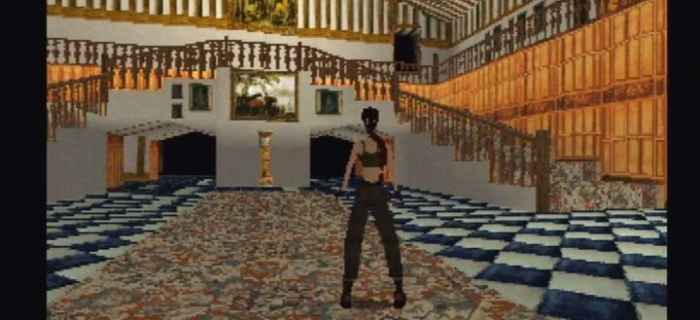
After an opening cutscene involving ravenous wolves, our famous heroine, Lara Croft, finds herself in her first tomb. The critical acclaim of Tomb Raider (1996) owed its thanks to the graphics (back then, they were astonishing), the atmosphere, the environments, the occasional puzzle sequences and, of course, the busty, no-nonsense, dual-pistol-toting English heiress who spent her time and money searching for lost or undiscovered archaeological wonders.
But before jumping into the world of poisoned arrows, flying Atlantean demons, and a creepy cowboy named Larson, the player is given the option at the load screen to explore “Lara’s Home,” or Croft Manor. In the first Tomb Raider, Lara’s home was rather limited. She could not go outside. Few rooms were accessible. Basically, she could perform backflips and side flips in her upstairs gym, climb on some crates that, for some reason, the delivery people hadn’t yet put into storage, practice jumps in her downstairs gym, and swim. Swimming, by the way, would end the tutorial. Climbing out of the pool, Lara would bid the player goodbye: “Now I’d better take of these wet clothes.” And back to the load screen it went.
Lara’s home was great because it was like an additional game level where the player could mosey around all day and explore the mansion’s many secrets without the imminent threat of wolves, bears, and T-rexes that somehow still existed. It also gave an interesting insight into Lara’s life. Although Lara Croft immediately became a celebrity in gaming pop culture, she lacked quite a bit of depth. She appealed to women and girls because she was a no-name-taking badass female who could save the world. She appealed to men and boys because she was a hot chick with a great body and guns. A win for everyone.
But depth? There wasn’t much to begin with. She really was only a cardboard cutout of the stereotypical badass woman. Her home, however, softened her a bit, reminding players that—oh, yes—she is a person, too, who has a home, and sometimes crates in the foyer blocking the hallways, and a swimming pool, and a place to relax. Best yet was that during the tutorial, Lara’s voiceover accompanied the player for most of the exploration, such as “Welcome to my home. I’ll take you on a guided tour,” and “With the walk button down, I won’t fall off even if you try to make me. Go on—try it!” While this is a bit like breaking the fourth wall, it also puts Lara on a more personal level with the player and makes the tutorial more interactive.
In Tomb Raider II and III, the mansion landscape expanded to include an outdoor assault course, hidden rooms, a quad bike track, and a complicated hedge maze. Let’s also not forget the old, ambling butler who endured much torture at the hands of gamers by getting himself locked into Lara’s freezer for no reason other than being a doting servant who followed Lara everywhere. Literally, everywhere.
By II and III, the developers must’ve realized that players really enjoyed exploring Lara’s home. In fact, the end-game level in II involves a shootout at Croft Manor between Lara and the stock baddies. The Tomb Raider series explored the tutorial element in a new way that both added to the main character and the stories themselves.
And the immortal butler who could block bullets with his serving tray was a nice little touch, too.
Fallout 3: “You’re Only Ten Once, So Have Fun!”
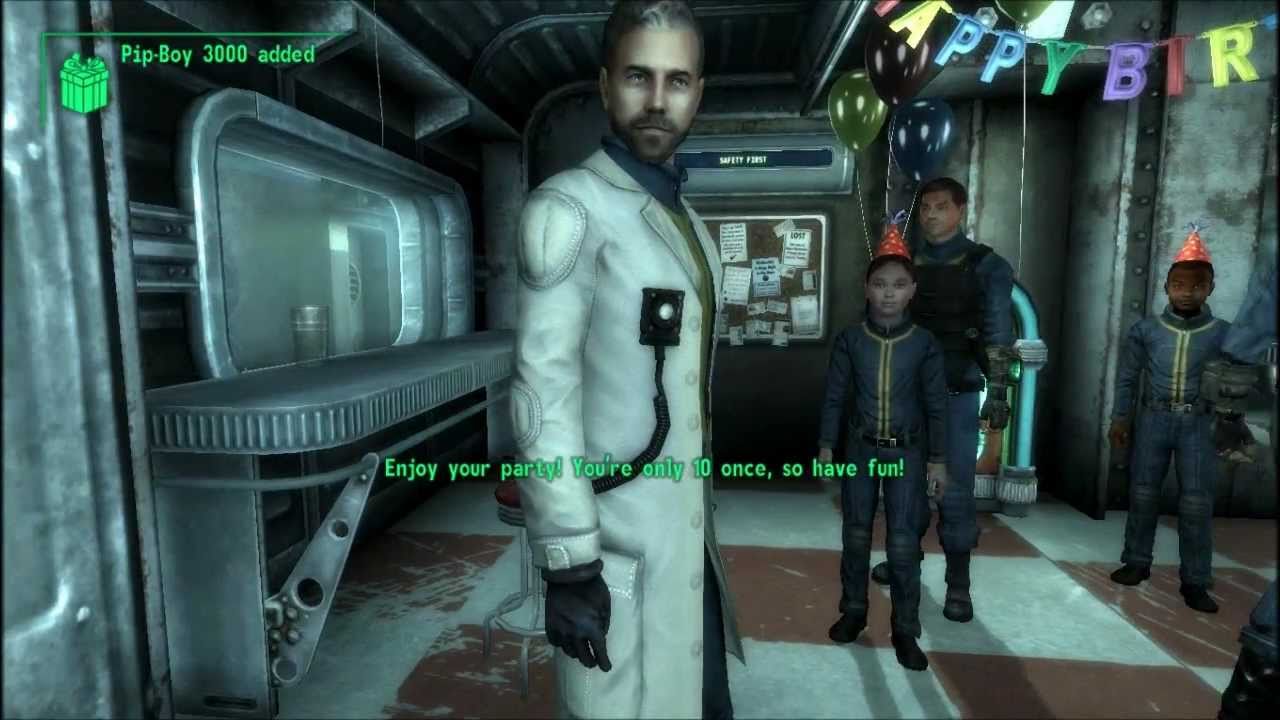
Part of the appeal of The Sims is creating your character and building your house. By the time you’re done having fun with that, you might still have it in you to actually play the game.
Set in a post-apocalyptic open world, Fallout 3 (2008) opens with the tutorial, a seamless introduction of the player character. Beginning with the character’s birth from the first-person perspective, the player must respond to, “Let’s see, are you a boy or a girl?” by selecting—you guessed it—“boy” or “girl” on the screen. Oh, and your father is Liam Neeson, and he also just delivered your wriggling little baby self into the world.
Dad Liam then remembers that you need a name. “Your mother and I have been talking,” he says. “What do you think about…?” The player must then enter his chosen name. It can be anything, from Bob to Sue to Player 1. Following the name selection, the player customizes his facial features, including hair style and color.
Sadly, Mom dies shortly after delivery. A white screen leads the player fairly quickly to the “baby steps” sequence of the tutorial, in which the player character is now a waddling toddler taking his first steps toward Dad Liam. When Dad runs to his office and leaves you in the playpen, you figure out how to unlock latches and pick up items. You can also find a baby book and adjust the character’s personality traits.
Another white screen takes the player to his tenth birthday where he is surrounded by Dad Liam, a group of friends, the obligatory bullies, and other adults. This is the player’s first opportunity to interact with the NPCs (non-playable characters), specifically by conversing with them through choosing one of the offered dialogue responses. You also receive your first Pip-Boy and learn how to fire a gun.
Fallout 3 interestingly employs the tutorial by seamlessly integrating character creation into the story and gameplay. Rather than simply frontloading the player with character design as The Sims does, Fallout 3 gives the process a bit more context. At times it seems a little forced, nudging the player in the ribs to remind him that hey, this is still a tutorial and here’s how fast the timeline is moving (such as when Dad Liam says, “Just a year old and already walking like a pro,” and later, “I can’t believe you’re already ten”). But given how quickly these prologue sequences move through time, these hint-hints are somewhat necessary.
Most importantly, Fallout 3’s tutorial places immediate responsibility for the character and gameplay into the player’s hands. Especially given the open world nature of Fallout 3, the player will intuitively explore anything and everything upon gaining access to the outside world. Instead of sitting the player down and forcing him to read pages of direction, Fallout 3 trusts the player enough to explore gameplay and learn the controls to the point where players no longer even feel like they are performing the tutorial. Seamless tutorials imply that the game trusts the player to figure things out on his own.
All Is Quiet in the Maw: Little Nightmares
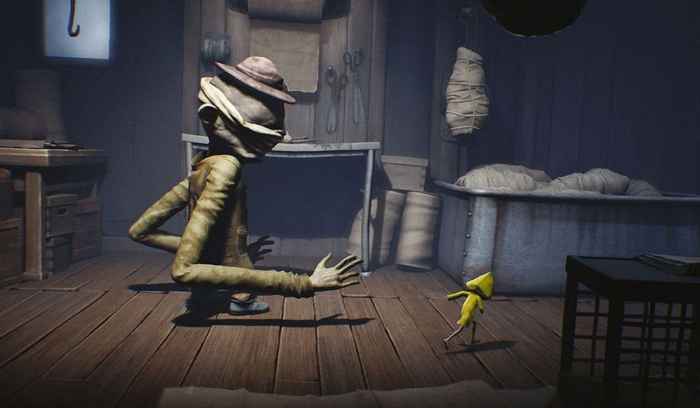
If Tim Burton made a game, it would be Little Nightmares (2017). The player controls Six, a little hooded character wearing a yellow raincoat, who must navigate her way through the Maw. The Maw is a mysterious ship run by disturbing and ugly creatures like the long-armed, short-legged, blind—thing—that pursue Six throughout the entire game. The objective is escaping the Maw and sating Six’s excruciating hunger that recurs throughout the game, forcing her to eat a live rat at one point and a loyal little Nome creature at another. The final confrontation occurs between Six and “the Lady,” a geisha with supernatural powers and an aversion to mirrors. Six defeats her and inherits her powers, presumably escaping the Maw shortly after.
Little Nightmares hearkens back to Playdead’s Limbo (2010), another dark puzzle-platformer with little to no narrative explanation. The game opens with no clarification on Six’s location, how she ended up there, where she is going, or even who she is. Basic commands like climbing, crouching, walking, and lighting her lighter are given no prompt. More complicated actions, like dragging boxes, are directed through a single line on the screen (“Press this to do this”) that doesn’t interrupt gameplay or offer some extensive explanation to which the player won’t pay attention.
The unique thing about Little Nightmares, as with Limbo, is the lack of dialogue, and this lack of dialogue adds to the dark, directionless atmosphere of the game. With the exception of grunts and mumbles, no words are spoken by Six or other characters. It is a testament to the studio’s creativity that they could create something akin to the silent film, a nostalgic medium of film entertainment that became obsolete after the introduction of the “talkies.” Though surpassed by technical advancements, one would be remiss to deny the creativity required to produce a silent film.
Although not the first game ever to employ minimal to no dialogue or direction, Little Nightmares continues to prove that less is more in terms of development. How different would Little Nightmares be if dialogue existed, or even more directional tutorials? Its beauty is in its minimalism.
P.T.—I Mean, Silent Hills
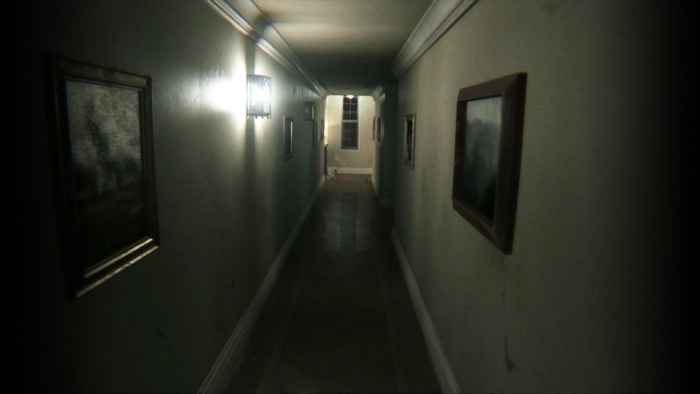
Oh, how Hideo Kojima cleverly trolled us all.
P.T. (short for “playable teaser,” a fact undiscovered until the completion of the demo) was released for the Playstation Network in 2014 by the developer, 7780s Studios—ahem, the fictional developer—during Sony’s press conference at Gamescom. Little information was known about this mysterious game, and the complete lack of direction in the demo left players in the dark, wondering just what in the heck they were actually playing.
In P.T., players explore the limited setting by moving through the lone hallway multiple times. Each time the player reaches the end of the hallway and goes through the door, he or she starts back at the beginning of the hallway. Access to other rooms and locations branching off from the hallway depends upon the player solving complicated puzzles, puzzles which are frustratingly unclear. In fact, P.T. was so complex that Nathan Grayson of Kotaku wrote an article titled “Nobody Actually Knows How They Solved the Silent Hill Teaser” 3 in 2014, in which he gives a particular example of how a couple played the game at the same time and achieved different results.
After multiple visits down the hallway, things become more unusual and more gruesome. Radio static, messages written on the wall that weren’t there before, the horrifying ghost, Lisa, and a fetus in the sink eventually turn up. The sequence of events and the triggers for those events seem to happen at random. One player’s trip down the hallway may trigger Lisa’s attack, subsequently killing the player’s character and ending the demo. Other players’ trips down the hallway may trigger the unlocked bathroom door. It’s a very clever mystery that, to this day, players aren’t sure they fully understand. Some think the ending is triggered by a certain sequence of actions. Others think that playing with a microphone plugged in affects gameplay. Others think everything happens at random.
And wasn’t all of that mystery Kojima’s intent to begin with? The complete lack of clarity and direction may have indeed frustrated some players to the point of giving up, but P.T. was a very intricately-wrapped puzzle designed to offer great reward to the players who had the stamina to finish: it is not until the conclusion of the demo that players discover a mo-capped Norman Reedus and the promise of the newest Silent Hill game, Silent Hills. What was birthed in complete secrecy and trickery proved to be quite the clever marketing technique. Ultimate fanservice indeed.
Again, while wholeheartedly frustrating at times, P.T. proved that an absence of direction, an absence of tutorial, can create the tensest and most terrifying of atmospheres—and, most interestingly, can promote a new game in a fan-favorite series. But while the game lacks direction and clarity, it certainly doesn’t lack narrative. Kojima wanted players to explore P.T., to take their time and discover the hidden little mysteries that the game offered. P.T. is ripe for the picking in terms of a backstory, if players only take their time to look for it. Players worldwide have extensively studied the hidden messages and story within P.T. A number of written and video analyses exist across the internet, interpreting just who Lisa is, what’s in the paper bag, and why—Lord, why—there is a fetus in the bathroom sink.
Unfortunately, Konami, the publisher of P.T., abruptly cancelled Silent Hills, much to the fury of devoted fans everywhere. Film director Guillermo del Toro, who was set to work with Kojima on Silent Hills, bitterly and understandably slated Konami for their terrible decision. Konami tarnished Kojima’s name, even banning him from accepting “Best Action-Adventure Game” for Metal Gear Solid V: The Phantom Pain at the Game Awards in 2015 4.Kojima left Konami, and. P.T. was removed for download from the Playstation Store. The glory of P.T. and Silent Hills went up in a cloud of smoke, along with Konami’s reputation.
As the above games prove, the dreaded tutorial doesn’t have to be—well, dreaded. Developers can and should learn to implement fun and new ways to teach the player how to play without boring them to death or interrupting gameplay. Again, these are just a few of many, many games that employ the tutorial in a special and inventive way. What other games with memorable tutorials come to your mind?
Works Cited
- “What’s your take on forced tutorials?” Reddit. Online. https://www.reddit.com/r/Games/comments/37z4uf/whats_your_take_on_forced_tutorials/ ↩
- “I Hate Tutorials in Games!” The Escapist. 2012. Online. http://www.escapistmagazine.com/forums/read/9.397242-I-Hate-Tutorials-in-Games ↩
- Grayson, Nathan. “Nobody Actually Knows How They Solved the Silent Hill Teaser.” Kotaku. 2014. Online. https://kotaku.com/nobody-actually-knows-how-they-solved-the-silent-hill-t-1621044581 ↩
- Kotaku. “Fans Boo Konami for Banning Hideo Kojima from The Game Awards – The Game Awards 2015.” YouTube. 2015. Online. https://www.youtube.com/watch?v=n4VAzkK_Wmc ↩
What do you think? Leave a comment.





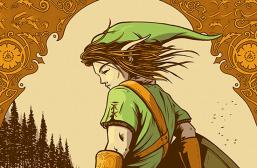





I think that tutorials can be helpful, but there should always be an option to skip them.
There used to be these things called “instruction manuals” that came with games. They were great. While my brother was playing the actual game, I could read the instruction manual and discover new information that I could then apply during my turn at the game. I take it that such advanced activities as “reading” are considered “unusable” these days…
I remember that half the fun of buying a new game was reading the manual in the car on the ride home. I’m talking Sega Genesis/SNES days. I would try to memorize the controls before I even popped in the cartridge. Although there are still some token manuals included in game boxes, that little book used to be your lifeline.
The best tutorials are those that are a separate option in the main menu, so I don’t have to go through it every time I start a new game.
Frustratingly from what I’ve heard, playtests have consistently found that if you do this, people who badly need a tutorial will think they don’t, skip it, and think the game is bad because it didn’t force them to do a tutorial.
Even if you have a forced tutorial, you can still have confused players if the tutorial is sufficiently hard and the player is sufficiently new, like in the case of Cup Head being played by the journalist.
YEEEES! I keep thinking this with Pokemon Sun/Moon. The first flippin’ hour of the game is basically one long tutorial with a ton of cutscenes.
I disagree. Those are only slightly less terrible than a long forced tutorial at the start, because they try to cram everything you need to know into one obstacle course half of which you will have forgotten by the time you actually need it
Completely agree. The original Half Life had one of my favorite tutorials ever. It was separate from the campaign, but still felt like a real event within the story. Gordon is learning to use the HEV suit, so it makes sense that we are being told how to do basic actions like crouching and jumping.
The best part is at the end though, when you are in a room with a scientist and a security guard. You can just get on the train and finish the tutorial, but you can also cause havoc in the final room. It allowed you to experiment with the reactive AI and put all of the skills you had just learned to use, since the security guard would fight back.
It has all the elements of a great tutorial: It makes sense within the fiction of the world, teaches you everything you need to know, gives you a sandbox opportunity to experiment, and is entirely optional.
This is something I think about quite a lot when playing a new game. Harvest Moon on the 3DS for example, had me feeling like I really needed to work to stick the tutorial out. Shovel Knight, on the other hand had some pretty neat level design that didn’t explicitly take away agency but encouraged the player to experiment with their controls and surroundings at the beginning of the game.
I don’t find in-game tutorials all that annoying in general.
Tutorials should be skippable. And there should be a way to replay them if you’ve put the game on hold for a while.
I think with gaming becoming more mainstream tutorials are important as developers won’t want to alienate new players by not introducing them to their games mechanics even if they’re the 3rd or 4th in the series. In saying that clever incorporation of tutorials or optional tutorials helps experienced/returning and new gamers alike enjoy and become fully immersed in the first few minutes/hours of games like you’ve said.
I think the new God of War incorporates the tutorial in an engaging way that ties in well with the foundation of the game’s story and character relationships. In God of War’s case the timing of the tutorial aspects also helps greatly.
This article had me scratching my head a couple of times. Is Ms. Legler for or against tutorials? The examples of unique or non-existent tutorials were both weak in game selection and over-analyzed each game. Tutorial styles can and should be analyzed but this is not well-done.
I really enjoy Fallout 3’s intro. Players get to see what it would be like to live in a mostly functioning vault, something quite rare in the Fallout universe. You mentioned Assassin’s Creed III. That was my first Assassin’s Creed game, and boy oh boy does that Haytham part drag on. When I think of tutorials, though, Kingdom Hearts II is the first game that comes to mind. Talk about a game that players had been waiting to get their hands on like you described in your introduction. They can’t wait to start controlling Sora and go on another adventure with Donald and Goofy. Can you imagine how confused and impatient players must have been on their first playthrough when they had to play as this new character Roxas?
This article reminded me of the tutorials in Castlevania: Lords of Shadow, I couldn’t even play the game at all, every single new room I entered there it was a new tutorial, and the game stoped the action to tell me what to do. It was like this the whole first chapter. After that struggle, when I started the second chapter I thought it was over, there was another one. That’s when I gave up (and never played the game again since that).
The best games, the most memorable ones. The ones that get replayed and remembered are often the ones that come without any kind of hand-holding.
Children’s intelligence is under-valued. When I play games today, especially games I’m picking up again for the nostalgic value 15+ years after originally playing them, I can’t help but wonder how I as a six year old was able to get through some of the things that I currently struggle with.
I feel like we grow up and learn to dislike learning… as ironic as that is.
Great article. Far Cry Blood Dragon has a fantastic parody of tutorials. If you’ve never played it, I think the opening level is worth the purchase price alone. The game’s fantastic beyond that too, though.. for a comedy/action shooter.
Great article. I enjoyed helping the editorial process and it’s fun to see this going live. Good work. Looking forward to more 🙂
A really interesting read. I admit this is an aspect that often frustrates me, especially if you can’t skip it, but it was great to hear how creative game writers/creators have found interesting ways to improve this experience.
To be honest games have gotten more complex. An easy solution is a separate tutorial mode like the Star Fox ones. More advanced players don’t have to bother. Newer players can just do the tutorial.
Or you could just throw the player in and see how they figure it out like in Zelda BoTW.
i wish tutorials were broken out into another option in most cases so that:
a) i could skip them with a game im familiar with
and
b) redo them for a game that i have been away from for a long time
Tutorials should be invisible. I want the game to teach me without me realising I’m being taught. Learning to play the game is part of the game.
Agree with you.
Could not agree more.
Nintendo were always best at this, though. No tutorials, just smart level design teasing out the player’s capabilities with a dumbed down starting area to flex your muscles in and work it out for yourself. Mario 64’s opening outside the castle. Zelda’s starting in Kuriki villages or wherever it is. They’re the best tutorials.
3D Zelda titles tend to have terrible tutorials. You get stuck in the starting village doing annoying tasks before you can proceed. I want to recall one game even snuck in a starting village tutorial for a weapon that you wouldn’t even get until later in the game.
People hated the 3D Zelda tutorials so much that once Nintendo used the promise of “We made the tutorial shorter this time” to help push the next title.
Really great read. In my mind, one of the best tutorials ever is in Brutal Legend. In that, the first half of the game is a very subtle tutorial, constantly building you up to learning all the various aspects of leading the stage battles. People have criticised the game for shifting into a kinda RTS-lite mid-way through, but, the way I see it, the third party action stuff is really just preparation and training for the stage battles. Pretty much every mission trains you in some gameplay feature, and the stage battles just tied them all together.
I think you end up having to make some assumptions about your core audience when you design tutorials.
An article on tutorials and no mention of Portal (1)? Portal is virtually all tutorial. Most of the design time (as explained in the “director’s narration” mode) went into ensuring the game held fast to a natural progression of allowing the player to discover how the game worked.
Very nice article. Thoughtfully written and researched, and clearly done so by an author who not only enjoys video games, but who also writes in a way that’s both informative and easy to read. I agree with most of the points in the article (although I never found the tutorial in Fallout 3 to be forced), and am of the opinion that, unless the controls to a game are enormously complicated, is there really a need for long, drawn out tutorials? The points the author raised about the AC III tutorial for example, was the main reason I never got into the game.
Anyway, kudos to the author, great piece.
You know what really gets on my nerves? It’s when a video game has a “false start.” You think the tutorials are over, but it turns out they still have a few up their sleeves.
I hate starting new games. I’ve been playing games since about 1982. I’m ancient, and very experienced, and yet I still have to go through the 20 minute dull as anything tutorial every single time I start a new game. Ugh.
I miss the days when you got a manual and were expected to read it. And you could refer back to it later, which you can’t easily do with tutorials.
It’s very important to define what a tutorial is as there always seems to be confusion. Tutorials are a design tool just like everything else. They can be poorly designed or an inappropriate fit for the rest of the gameplay. They can also be an excellent teaching tool that go a long way to help players understand what they need to know to play the game.
We shouldn’t be afraid of tutorials and neither should “hardcore” players who are too prideful for them. They may actually learn something.
A tutorial in the sense of “let’s teach new players how our game works” is not, in and of itself, a bad idea. The implementation of that idea however is apparently something that most developers have issues with!
There are essentially only two types of players when it comes to designing good tutorials: complete beginners with little or no prior experience with video games, and veteran gamers who have at least some experience with video games.
Far too many games offer only *one* tutorial aiming to teach both of those groups at the same time. Far too many games make you sit through that tutorial every time you start a new game with no ability to skip it. Far too many games make the tutorial too granular and rigid, instead of covering all of basic movement (moving forward/back/strafing, duck, jump, look around with the mouse for a first person game) in a single lesson you first have to move back/forward, then strafe left/right, then look around, then jump, etc.
It’s very possible to design great tutorials and to cater to both inexperienced and experienced gamers alike. For example, a separate tutorial level with the absolute basics should be offered when starting the first game only. Make it optional but guide players towards playing it. The intention of this is to teach players things like WASD-movement for first person games, selection boxes and mouse-clicks to give orders in strategy games, jumping between platforms in platformers and so on.
If your game includes a lot of complexity and many systems (like a 4X strategy title with intricate diplomacy options, massive tech trees, customizable units, etc.) offer an advanced tutorial level too. If you start the basic tutorial make it switch over to the advanced one at the end.
For every other situation the best solution is inline tutorials that are shown only on the first time through the game. For example the lockpicking and hacking mechanism in Fallout 3; the first time a player attempts to lockpick make it a tutorial-mode event with a bunch of hints on screen and let them retry it until they get it right. Tutorials become unskippable for “hardcore” players but remain fairly unobtrusive, and they offer relevant information when you first need it.
You have a lot of great points here. Very occasionally, the mechanics do all of the teaching for us.
I appreciate when games drop you into the story from the beginning, and seamlessly integrate the tutorial as I play. There is a magical element in that similar to the lights dimming and the curtain rising as a play starts.
I used to love the Kingdom Hearts series growing up, replaying whichever games I had every year. But I *hated* the beginning of Kingdom Hearts 2, which felt like one big tutorial until you gained control of Sora for the first time.
I love games that start by dropping you right in the middle of the story or even action. It’s a bit daunting if you’ve never played that game before and it has new mechanics, but I feel like this approach is more organic. I also like the option of skipping tutorials, especially when it’s a game I love replaying or an installment in a series where the mechanics don’t change much game to game. Nothing is worse than mindlessly smashing whatever button will make the text boxes go away so you can actually get on with playing.
A tutorial obviously needs to teach basic controls and game mechanics, but it also has some other important jobs. It should immediately set tone and expectations for the game–within the first 5 to 10 minutes of play, I should understand exactly what kind of experience this game is promising me.
Tutorials should either be well-integrated with the main story (Mass Effect 3, Borderlands, Watch Dogs) or be *awesome fun* (Saints Row 2) or just plain be skippable (Gears of War).
Players have gotten worse and worse at figuring out a game, and more and more impatient when they don’t understand. I’ve seen people literally just tap everywhere on the screen without looking and getting angry because he didn’t understand how to play…
I would usually refer to tutorials at the beginning, but then will try to figure the game out by myself for the sake of exploring and learning new stuffs.
i don’t mind tutorials, as long as they are tied into the game, i.e. they don’t just tell you press button A or B. They are pretty much the first level/mission of the story.
Nintendo are a nightmare for this. Warioware was the worst – starting a new game you have to go through a bullshit character cutscene just to play 30 seconds worth of minigames. It seemed to get worse with each iteration.
GBA and DS rpgs are terrible for tutorials too. I played one recently called Riviera – so much tutorial crap for something so easy to pick up.
I think it’s ideal when a game doesn’t have a “tutorial” set apart from the rest of the game, but instead subtly teaches you as it goes without you realizing that it’s happening.
The least many devs could do is letting advanced players disable all that annoying stuff if they already fail to provide an immersive way to introduce the game.
One of my biggest pet peeves these days is that there’s so many games that have like a 10-30 minute unskippable intro or tutorial. Pass. It’s a good way to get me never to play the game.
I feel some tutorials in games are a bit much. Take the recent Pokemon games for example. The first two hours of the game are literally spent holding your hand there is no option to skip it. Coming from someone who has played Pokemon for over ten years I find these tutorials ridiculous. I think there should be an option to skip the tutorials for experienced players.
I
I feel some tutorials in games are a bit much. Take the recent Pokemon games for example. The first two hours of the game are literally spent holding your hand there is no option to skip it. Coming from someone who has played Pokemon for over ten years I find these tutorials ridiculous. I think there should be an option to skip the tutorials for experienced players.
I really enjoyed the way shovel Knight teaches a player the controls of the game without giving explicit instructions. The first level is cleverly designed so a player ends up figuring out how the controls work without a six hour long tutorial.
Honestly it’s the name/character creation screen that usually takes me hours to get past
I find that tutorials are important to properly enjoy games, and the more effort a game makes to make tutorials flow into progressive gameplay, the better.
Hands down I think the big issue with tutorials is impacting replay value. For example, Fallout 3’s opening is amazing. But doing a replay of the opening feels less satisfying because I just want to create my character and move on. Being able skip tutorials feels like a great compromise. However, in situations like Fallout 3, it’s a bit more difficult to decide since the tutorial is weaved into the game’s narrative.
I hope developers continue to look for more creative ways to ease players into the game without bogging down the beginning.
Tutorials are best when not heavy-handed, such as when they are more or less organically fused into the beginning of the game. I also believe tutorials should definitely never be forced on higher difficulties (assuming the game has difficulty settings): it should already be assumed the player has a basic idea of what they are doing if they are there, but it doesn’t hurt to give them the option. It’s the same with cut-scenes: no player should ever be forced to sit through a 10 minute cut-scene, especially if they’ve already seen it (I’m looking at you, Tales of Vesperia), and this is increasingly unforgivable as the decades since the invention of skippable cut-scenes pass.
Your point on Lara Croft’s mansion reminds me of my beef with pointless areas existing within games, whether they are out of the way areas with nothing in them, or mandatory areas that exist just to bore the player. If they must put hidden areas into games, at least give me an Easter egg or some other reason to go there.
This was a lovely read! And extremely relatable! I think tutorials, as LaPlant0 said should be on the light-handed side a to not annoy the player. Tutorials should be as fun as the actual gameplay itself
I KNOW HOW TO THROW A POKEBALL, LEAVE ME ALONE!
As someone else said already, the option to skip should always be there. But, I don’t mind games like Fallout 3 that incorporate tutorials into its storyline. As long as its done well.
Tutorials might not be seen as important by avid gamers but what of the person who just wants to get into video games and doesn’t know how to aim down the sights? It’s interesting — some could argue that an optional tutorial could be in place, but that approach sounds clunky to me. I wish there were a seamless way for not irritating veteran gamers while keeping games accessible for newer players.
The infamous tutorial from Kingdom Hearts 2 comes to mind. I’d like to think that the majority dislike said tutorial due to not having knowledge of the plot prior to Kingdom Hearts 2 and post-Kingdom Hearts, but in truth, the tutorial is just that slow. Understandably, Kingdom Hearts has a lot of mechanics and depth and requires the player to sit down and take some time to understand things, it just feels like the game hasn’t begun yet and if that feeling of “waiting for the game to begin” in the Kingdom Hearts 2 tutorial was incorporated into the game more seamlessly in a way that makes it seem as if the game has already begun, the tutorial might be far less of a chore to get through. Alas, considering the great deal of plot that exists during the tutorial, the game truly can’t begin until that tutorial is finished. The tutorial, however, is extremely iconic for its superb world building and setting. I can bet plenty of Kingdom Hearts fans can recall every bit of detail from that tutorial
It’s true that tutorials have a bad rep in the gaming world. Many tutorials are implemented poorly, which lead to a lot of immersion breaking moments, with random signs, text boxes, and slow down. However, as highlighted in the article, there have been some really great tutorials as well.
I think that we have to remember though, that every game may be an entry point for a new player. This means that although you may be an avid gamer, who has played every game in the series and mastered all of its secrets, not every player is that way. In fact, many players are not masters at games and this is usually why tutorials exist. To give refreshers, bring people up to speed, and inform them of controls and gameplay.
I agree that tutorials should be non-intrusive. But, I also believe that tutorials are necessary and should be there for everyone even if they don’t need it.
Honestly I feel as if we have come to a point where basic game functions are so ingrained in us that a general tutorial comes off as both redundant and belittling. I’m thinking basic functions like jumping, camera movement and simple attacks (eg: I guarantee most picking up a shooter for the first time will more than likely go for the trigger buttons on a controller to shoot – and be correct).
Perhaps there is a space for the more ‘complex’ games out there – such as fighting games with combo moves that are downright ridiculous in execution.
This whole work, and some of the comments here, reminded me of a game I played recently called Hellblade: Senua’s Sacrifice. No tutorial whatsoever – you have to figure out the controls, attacks (attack combos) and what can and cannot be interacted with in the world. Works perfectly given the setting (Viking Hell) and the tone of the game which is drenched in constant anxiety and uncertainty.
I think Tutorials are more than necessary for games as it allows new players to enter into the industry without worry. A lot of games rely on a basic level of games literacy and having even the simplest information explained prevents this from being a problem. It’s worth exploring positive examples (Breath of the Wild’s design is a good example of a natural learning curve), however, this occasionally deviates off topic for a more rounded discussion of the games themselves. Not necessarily a bad thing but I would like to see a more in depth discussion on specific good and bad tutorial practice.
This is a very interesting point; I think perhaps the biggest detriment of tutorials is that they interrupt the flow of gameplay, and are often required to proceed to what players want to do in the first place.
The thing is, there’s plenty of designs that allot tutorials to play out without this interruption, indeed they function as actively nodal forms. For example, when introducing a mechanic one needs to incorporate in a boss fight, this mechanic could be introduced via a smaller enemy fight without being transported to a separate stage. Games are essentially effective systems with which they teach players easily digestible patterns; the content of the tutorial is not the issue, but rather the mode in which it is delivered to the player. Some of these examples you provided were also effective tutorials without gameplay interruption.
I definitely agree with you that tutorials can be a big hit or miss with some games, all based on their executions. A game with the best tutorials, or rather lack there of, was Yacht Club Games’ Shovel Knight (later renamed to Shovel Knight: Treasure Trove). In this 2014 8-bit 2D platformer, the controls come naturally to the player, even if they never played a game of that genre. Or Mega Man X’s subtle flow of how it teaches its player the basics (Egoraptor did a very nice video on that game: https://www.youtube.com/watch?v=8FpigqfcvlM).
However, a game I think fails in its tutorials is Xenoblade Chronicles 2, which released on the Switch in late 2017. This is without a doubt one of my favorite games of all time, but I cannot praise its tutorials that much. They are fairly confusing and do not do a great job at explaining mechanics, even I failed to understand a key combat mechanic until very late in the game.
In strategy games, the tutorial can actually be helpful and helps save time.